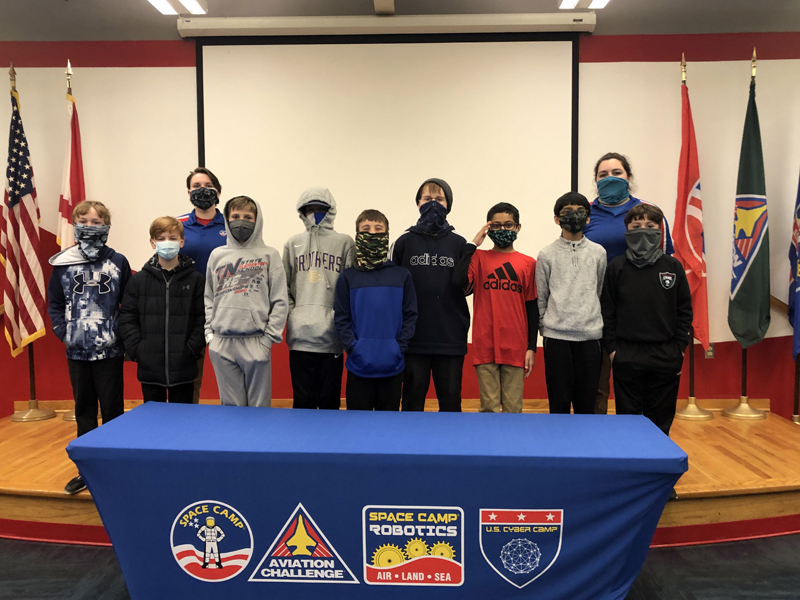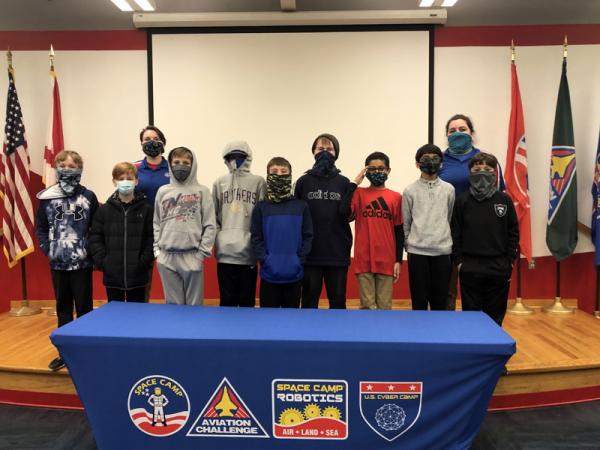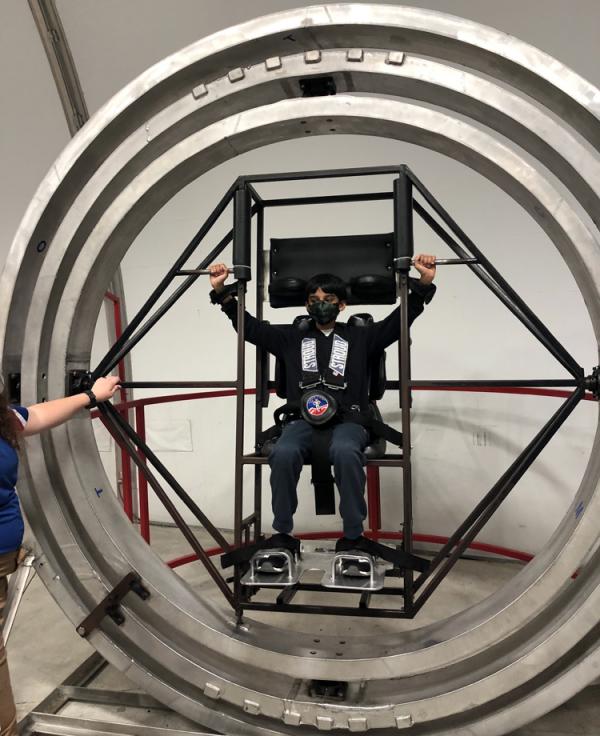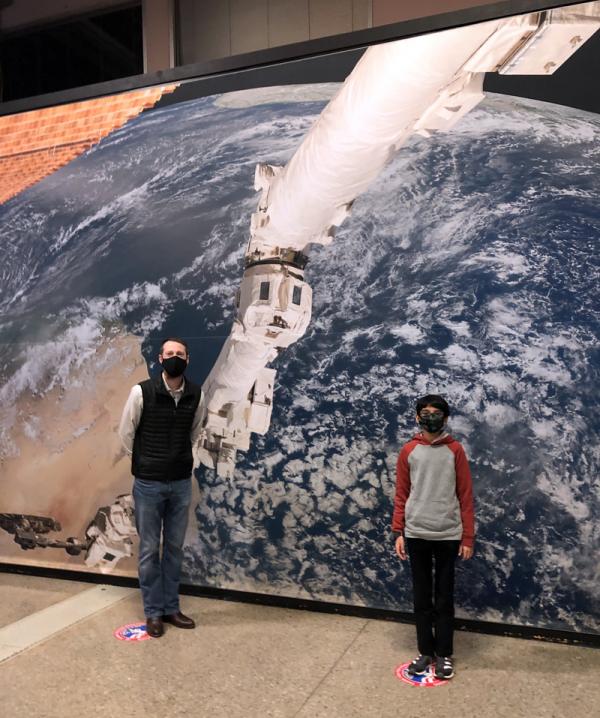KID REPORTERS’ NOTEBOOK
Taking Part in a Virtual Mission


Members of Cub Scout Pack 341 visit Space Camp from Memphis, Tennessee. Varun is pictured second from right.
As a member of Cub Scout Pack 341, I recently visited Space Camp in Huntsville, Alabama. The camp was inspired by the late Wernher von Braun, who was an aerospace engineer. The German-American scientist helped create and develop the Apollo rockets that took humans to the Moon.
More than 900,000 people from 145 countries have visited the camp since it was established in 1982. During my visit, I had the opportunity to speak with Nathan Carter, director of mission support. “Space Camp is the best place for future scientists, astronauts and engineers.” he said.
Carter enjoys meeting people from around the world who share a passion to learn about space exploration. “Shoot for the stars,” he advised. “When you set your goals, set those goals high.”

Varun tries out the Multi-Axis Trainer, a conditioning machine for astronauts.
FEELING WEIGHTLESS
During our visit, our Cub Scout Pack performed scientific experiments and experienced a simulated space shuttle mission. It was also possible to go scuba diving and other activities deep underwater.
The camp is part of the U. S. Space and Rocket Center, a museum with artifacts from NASA space exploration. We saw Moon rocks, the Saturn V rocket that launched the first human to the Moon, the Apollo 16 command module, and the Space Shuttle Pathfinder.
“My favorite activity was seeing the space shuttle,” said fellow Cub Scout Matthew Rose. “I also loved the Multi-Axis Trainer [MAT], since it made me feel weightless.” MAT is a machine that provides cardiovascular workouts and balance training for astronauts.
Several people who graduated from space camp have gone on to become astronauts, including Dottie Metcalf-Lindenburger. When she was a girl, she flew on a simulated space mission.
“The experience here has helped participants open their minds to becoming astronauts, engineers, and space scientists,” Carter said. “In addition to teaching about science, history, and space, the camp also teaches the idea of teamwork, trust, communication, and other soft skills.”

Varun learns more about the camp from Nathan Carter, director of mission support.
PANDEMIC PRECAUTIONS
During the coronavirus pandemic, which began in March 2020, the camp has had to lay off staff and decrease the number of students who can participate in the program. To overcome the challenge, camp officials initiated a program called “Save Space Camp,” raising funds from corporations and alumni.
To ensure the safety of everyone at the camp, several precautions are being taken, including additional cleaning, social distancing, and the enforcement of mask-wearing. The number of campers is limited during each visit.
“With smaller numbers, we can provide a different experience, in the sense that it gets more one-on-one attention between the crew trainer and a student,” Carter said, “which is a very cool and safe experience.”
